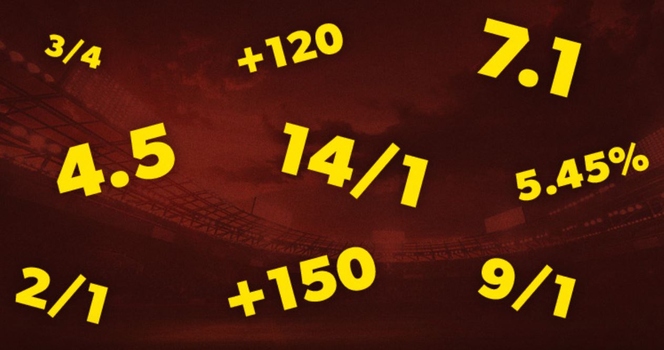How Do Betting Odds Work?
The world of gambling can be something of a confusing place. There are dozens of different bookies to choose from each of which offer thousands of different markets on a huge variety of sports. Before choosing who to bet with and what to bet on, however, it is vitally important that you understand the most important part of betting – the odds.
That is where this article comes in. By the end you will understand exactly what you are looking at when you next fancy a bet.
Betting Odds Basics
Let’s start with the basics – betting odds represent how likely something is to happen, or in other words, they are a reflection of the probability.
If a selection is given the odds of 2/1 you will win £2 for every £1 that you stake on that selection – you also have your stake returned for winning bets. It is fairly straightforward to work out the implied probability of a selection winning from its odds. With 2/1 for example, the calculation is 1/(2+1) which equals 30%, 7/1 – 1/(7+1) equals 12.5% probability. Something priced at evens, which simply means odds of 1/1, implies a 50% chance – the calculation is 1/(1+1).
Imagine there is a five horse race and each of the horses are as fast as each other. As every horse has an equal chance of winning, they would each be given odds of 4/1: four chances of the horse losing the race compared to one chance of the horse winning it. Of course, you would never get a situation like that. Firstly, the chances of all the runners in a race winning are never going to be completely equal and secondly the bookies would never make any money if they priced everything up fairly!
Think about the above example again. If each of the five horses had a £10 bet placed on it, the bookies would neither make nor lose any money. They would pay out £40 in winnings on the horse that won but would make £40 – £10 each from the other four. So the bookies use what is known as an over-round.
With our example each horse has a 20% chance of winning (1/(4+1)). That equals 100% probability or a round book. In order for the bookies to make money the implied probability must be over 100%. If each horse was priced up at 3/1 they would have a 25% chance of winning and the total implied probability would equal 125%. With a £10 bet placed on each horse the bookie would now pay out £30 on the winner but make £40 from the four losers leaving them with £10 profit.
Expanding Betting Odds To A Market
Now you understand how the bookies make money from over-rounds, you can look at the odds being offered across a whole market to see whether your bookie is giving you value or not.
Although odds have been displayed as fractions in Britain ever since the first bet, betting exchanges and even traditional bookies have increasingly started using decimal odds. Although they look different, they give the same information.
Exchanges use decimal odds because the prices change very fast and many people find them easier to understand with volatile markets. To calculate how much profit you would make from a bet with decimal odds you must multiply the stake by the odds and then subtract the stake. Take decimal odds of 4.0, the calculation is (4.0 x £10) – £10 stake = £30 profit.
To work out the implied percentage from decimal odds all you need to do is divide one by the odds in question. So 1/4 = 0.25 or 25%.
The bookies each have large teams trying to figure out the percentage chance of certain events occurring and giving them the right odds. Now you know how the odds work and you can work out the probability from them you can hopefully you can spot when they’ve gone wrong and make more profit from your betting activities.


